Neil Porter Q&A
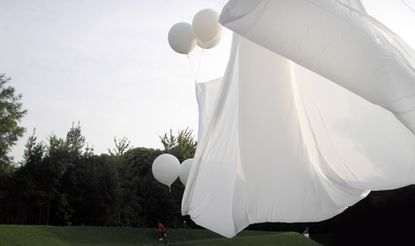
Over at the Arsenale, British landscape architects Gustafson Porter created a kitchen garden complete with ripe fruit and veg and grassy banks on which people could relax. We caught up with one half of the practice, Neil Porter.
Is it often that landscape architects are included in the Venice Architecture Biennale?
Well, it is an architecture biennale not a landscape one. Of course there have been people who have done things related to landscape architecture in the past, but I think we are probably one of the very first!
What is the main concept and the structure of your design?
The design is divided into three stages. We have a big space in the end of the Arsenale, an ex-convent buildings are. First, you go into the storeroom, which is gloomy and dark, and there are lots of names of extinct plants and animals. We wanted to react to Aaron’s theme, which we felt was about ‘putting your house in order’, so we thought we’d have this as the opening piece.
Why did you choose names of extinct plants and animals?
We felt that the names of these extinct plants would trigger people’s thoughts. Especially when they go through to the next stage of the garden, where there is an abundant, lush garden, where there is food and lots of plants.
Wallpaper* Newsletter
Receive our daily digest of inspiration, escapism and design stories from around the world direct to your inbox
What is the next stage?
After that room, you walk into an incredible vegetable patch filled with plants that you’d find on San Erasmo, the garden island of Venice. It is meant to be like a kitchen garden, it has all those fantastic vegetables, wonderful herbs and spices and flowers that you’d want in your garden, and put on your kitchen table. Having thought ‘ok, plants are really important in our existence and enjoyment of life and food’, we created at the end of the trail as one very simple space, where you are invited to think and relax. It also includes a big white cloud, which floats above the garden.
Was the garden designed to be seen in a particular way?
This is really the final space in the sequence, but it was never designed so that someone would have to move in any particular way through here.
Do you feel that your participation will help the wider audience understand better landscape architecture, and make them more aware of landscape architecture, and its importance and connection to buildings?
There are so many different audiences. For example in England people love their gardens and they may know a lot about plants, but they don’t know a huge amount about landscape in particular, in terms of street-scaping, green urban spaces and so on, so it’s a very good thing for us! We feel that how landscape interacts with buildings is a growing field, encompassing environmental issues and sustainability. I think landscape architecture has moved up the agenda. With the exception of public parks, it used to be the domain of wealthy individuals, but now it has become part of the agenda. It is part of the debate about how do you live well in a city and share it with others.
If you could summarise the concept in one phrase, what would you say the main focus was?
We titled it ‘Towards Paradise’ in the hope that people would come here and would walk away thinking about what is important, not just about landscape, but about their lives.
Ellie Stathaki is the Architecture & Environment Director at Wallpaper*. She trained as an architect at the Aristotle University of Thessaloniki in Greece and studied architectural history at the Bartlett in London. Now an established journalist, she has been a member of the Wallpaper* team since 2006, visiting buildings across the globe and interviewing leading architects such as Tadao Ando and Rem Koolhaas. Ellie has also taken part in judging panels, moderated events, curated shows and contributed in books, such as The Contemporary House (Thames & Hudson, 2018), Glenn Sestig Architecture Diary (2020) and House London (2022).
-
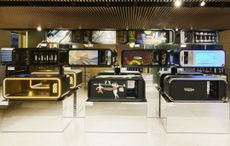 Technogym Home Bench 40 ways: designers interpret the home exercise classic
Technogym Home Bench 40 ways: designers interpret the home exercise classicTechnogym marks its 40 anniversary with 40 special editions of its Home Bench created in collaboration with international creatives
By Rosa Bertoli Published
-
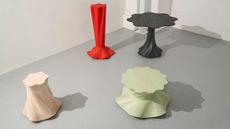 AHEC presents new works in American maple as part of the Wallpaper* Class of ’24
AHEC presents new works in American maple as part of the Wallpaper* Class of ’24The American Hardwood Export Council takes part in the Wallpaper* Class of ’24 exhibition at Triennale Milano during Salone del Mobile (16-21 April 2024), presenting new pieces by Parti and Giles Tettey Nartey in American hard maple
By Rosa Bertoli Published
-
 Paris’s Musée des Arts Décoratifs celebrates avant-garde jewellery design
Paris’s Musée des Arts Décoratifs celebrates avant-garde jewellery design'Fashion, Design, Jewellery Exhibit' is the new transdisciplinary exhibition at Paris’s Musée des Arts Décoratifs
By Minako Norimatsu Published
-
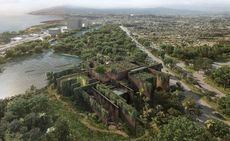 Out of office: coffee and creative small talk with Tatiana Bilbao
Out of office: coffee and creative small talk with Tatiana BilbaoBodil Blain, Wallpaper* columnist and founder of Cru Kafé, shares coffee and creative small talk with leading figures from the worlds of art, architecture, design, and fashion. This week, it’s Mexican architect Tatiana Bilbao, who is currently designing a brutalist, ethical aquarium in Mazatlán and has an exhibition at Copenhagen's Louisiana Museum of Modern Art opening in October 2019
By Bodil Blain Last updated
-
 At home with Deborah Berke
At home with Deborah BerkeArchitect Deborah Berke talks to us about art, collaboration, climate change and the future, from the living room of her Long Island home
By Ellie Stathaki Last updated
-
 Rheaply redefines circular economy in architecture
Rheaply redefines circular economy in architectureOn Earth Day 2022, we speak to Rheaply founder Garry Cooper Jr about his innovative business that tackles reuse and upcycling in architecture and construction
By Ellie Stathaki Last updated
-
 Paolo Soleri's sustainable urban experiment Arcosanti enters new era
Paolo Soleri's sustainable urban experiment Arcosanti enters new eraWe meet Liz Martin-Malikian, Arcosanti’s new CEO, who takes us through the vision and future for Paolo Soleri's sustainable urban experiment
By Hilary Stunda Last updated
-
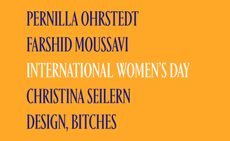 International Women’s Day: leading female architects in their own words
International Women’s Day: leading female architects in their own wordsInternational Women’s Day 2022 and Women’s History Month: Wallpaper* talks to four leading female architects about dreams, heroines and navigating the architecture world
By Harriet Thorpe Last updated
-
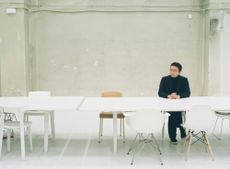 Sou Fujimoto judges Wallpaper* Design Awards 2022
Sou Fujimoto judges Wallpaper* Design Awards 2022We chat with Wallpaper* Design Awards 2022 judge Sou Fujimoto about his work in Japan and abroad, and our shortlisted designs and winners
By Jens H Jensen Last updated
-
 Dream the Combine cross-pollinates and conquers
Dream the Combine cross-pollinates and conquersThe American Midwest is shaking up the world of architecture. As part of our Next Generation 2022 project, we’re exploring ten local emerging practices pioneering change. Here we meet Minneapolis duo Dream the Combine
By Ellie Stathaki Last updated
-
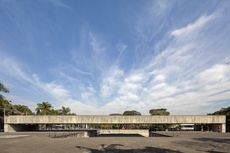 Architecture in the words of Paulo Mendes da Rocha
Architecture in the words of Paulo Mendes da RochaGreat modernist Paulo Mendes da Rocha passed away on 23 May 2021 aged 92. Here, we revisit the interview he gave Wallpaper* in 2010 for our Brazil-focussed June issue, talking about architecture, awards and his home country
By Isabel Martinez Abascal Last updated